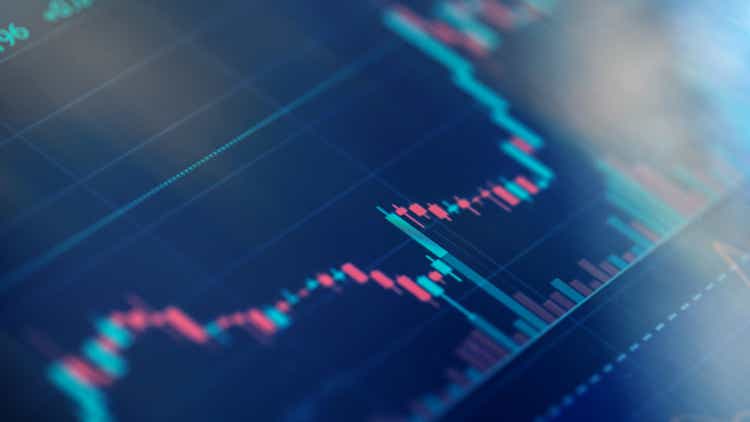sankai/iStock via Getty Images
Starting a new week with US markets unplugged today offers a moment to review the bear market progress to date. From their most recent highs:
-
- S&P 500 -23%
- Nasdaq -32%
- Russell 2000 small caps -32%
- TSX -14%
- Cdn $/USD -7.8%
- Canadian financials -17%
- Canadian oil and gas stocks -15%
- US oil and gas stocks –20%
- US Banks: –32%
- Asset managers –37%
- Consumer finance –29%
- Canadian REITs -22%
- industrial REITs -33%
- office REITs: –35%
- retail REITs –27%
- home furnishings: –44%
- autos –46%
- airlines –44%
- gambling –57%
- retailers –37%
- consumer electronics: –47%
- hotels/cruise lines/resorts –34%
- trucking –32%
- rails –24%
- software/services –32%
- tech hardware –28%
- restaurants –24%
- Bitcoin -70%
- copper –19%
- aluminum –36%
- nickel –47%
- silver -21%
- gold -11%
- gold miners -27%
- food price index –9%
- oil (WTI) -12%
- lumber –60%
- steel rebar –25%
- consumer staples –15%
- utilities -15%
- homebuilder stocks–42%
- high yield bonds (JNK) -16%
- Cdn preferred shares -13%
- Cdn investment-grade bond index -18%
- US 20-year bond index -33%
Theoretically, 60% equity and 40% bond benchmark accounts are -20% year to date (assuming 100% reinvestment of all income with no fees or withdrawals). In reality, many portfolios are faring worse because they came into this bear market with equity weights greater than 60%, leverage, little cash, and things like perpetual preferred shares and low-quality debt and funds (with no maturity dates) as fixed income (aka reaching for yield).
It’s worth noting that the S&P 500 has never been down this much over five months without a recession recognized within 6 to 12 months of the market peak (which was January 2022).
Recessions have always killed inflation and commodity prices. Stocks typically don’t bottom until sometime in the final third of the economic decline, when central banks are back to easing monetary conditions, the masses are liquidating in losses, and government bonds are rising sharply.
Today, a recession is not yet confirmed; most central banks are trying to tighten aggressively, cash balances are low, risk allocations are still near historic highs, and government bonds are not yet rebounding.
Remember, the average S&P 500 decline accompanying a recession has been 42% over 16 months, and the TSX has roughly tracked along for the ride. In their peak to trough decline this cycle, US stocks and corporate debt might be halfway, Canadian stocks may be a third, while government bonds are due for a renewed period of strength.
Patience, cash and investment discipline will define full-cycle outcomes, as always.
Disclosure: No positions
Editor’s Note: The summary bullets for this article were chosen by Seeking Alpha editors.


Be the first to comment